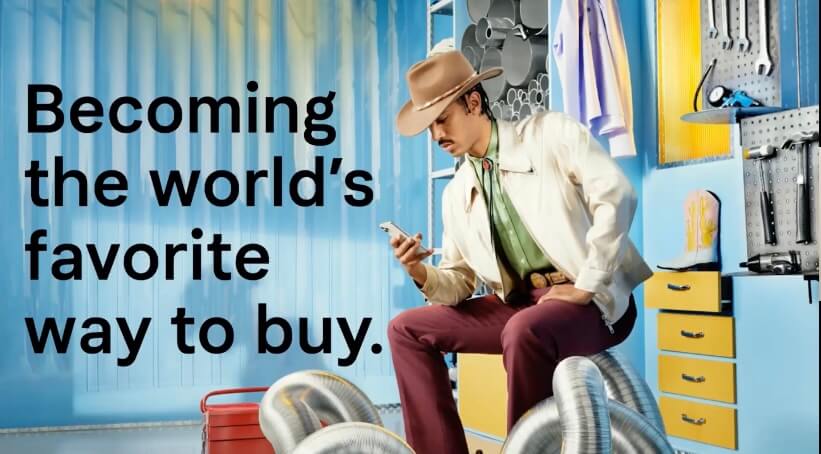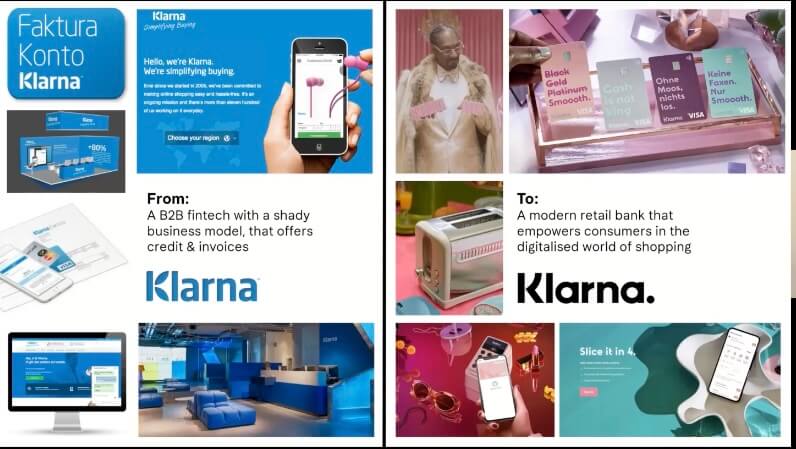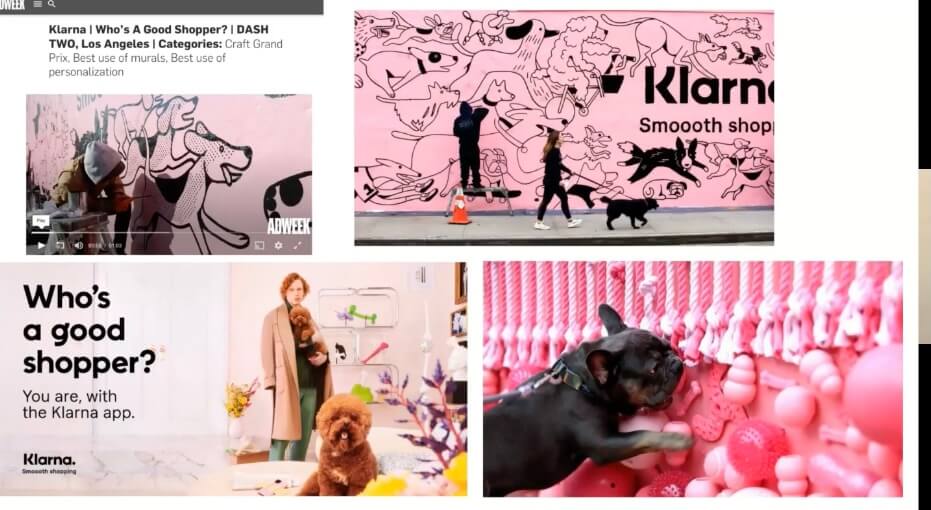This article is taken from a talk given at Future of SaaS festival 2020, when Jon Chang was Head of Shopping Growth at Klarna.
At Klarna, we’ve certainly built up our credibility in terms of utilizing growth. Don’t believe me? Well, we managed to go from 500,000 to 5 million users in one year.
In this article, I’m going to show you how we did it. Hopefully, I can provide you with some first-hand insights that will allow you to put strategies in place for your own growth.
Here’s a break down of our main talking points :
- About me and Klarna
- Our ultimate goal
- About martech
- From B2B to D2C
- Examples of successful campaigns
- To wrap up: spread the word
First, let me give you a little bit of background on myself and what I do at Klarna
About me and Klarna
I am leading the charge on global shopping growth for Klarna. That means using our mobile application to get tonnes of people to shop across all of our retailers with ‘buy now, pay later’ products. Additionally, I'm also a professor at New York University. I teach undergrad for marketing analytics and social media marketing.
Prior to that, I was marketing director at Kickstarter and also worked on IBM Watson's martech and ad tech products.
What we do
Our mobile app allows you to shop anywhere, and it’s a great way to make checkouts and shopping smoother with way less friction.
We use individual user interest data and behavioral data to curate the best products that seem best for consumers. We also have exclusive partnerships with integrated merchants that allow our technology to be directly embedded on their sites. This allows us to make the checkout process a lot faster.
What Klarna can offer you
We want to transform shopping into a social experience. You can create a wish list of your favorite products and then share it with others to spread the word! We have very purchase-oriented product features that include great new deals from our affiliates. This facilitates a one-click-copy-and-paste into the checkouts, so users can buy as soon as something catches their eye.
We've productized the entire shopping experience, and made online shopping a more dynamic, spontaneous experience.
Our ultimate goal
Our goal is to specifically target what most people hate about shopping and seek an ease-of-use solution for this. We’re really focused on making shopping ubiquitous. This is our growth hack for market expansion.
You know how it is with the growth of any business, you’re going to see dips and spikes along the way. At Klarna, we pride ourselves on being agile and reactive. We pride ourselves on looking at failure as an opportunity. Our motto is, “how fast can we fail, how fast can we learn?”

Launching a direct-to-mobile app
We launched our mobile app, a direct-to-consumer platform. Our research showed that nearly all financial companies have a blue logo with a very similar consumer perception. It's astounding how they all just look the same, so we wanted to make ours stand out. As you can see from the image above, I think we succeeded at that.
We want to enable shopping and the use of our app to go hand-in-hand, and we want it to be easy. Having the two be disjointed just makes it really hard to provide a really good user experience. Here’s another saying of ours, “Is this something a bank would do?” If the answer is yes, we don't do it.
We don’t want our UX to feel as dry and arduous as banking. We want it to feel fun, easy and spontaneous. Yes, Klarna utilizes financial technology but we don’t want our user experience to feel like a financial experience. We actually created a handbook for our employees demonstrating that, which you can see below. 👇
The great rebrand
As you can see here, our rebrand didn’t have the utilitarian look of a financial app. It recreates that experience of walking into a really cool store. It’s colorful, bright and full of character. 👇

Around this time, we launched our credit card and banking app loyalty programs. This was a major venture, and so it was essential to present this with the right look and feel that represented what we do.
About martech
To understand a little more about the use cases I’m going to present to you, it’s important that you understand a little more about our martech. Here's some information from research we conducted around the topic.
That’s quite a scary stat, right? And if that wasn’t bad enough, take a look at this.
And finally, just in case you weren’t convinced that there’s real cause for concern here:
What this means
As someone who has quite a wealth of experience from having worked at IBM Watson, I can tell you that the same problems arise every time you try to implement any kind of advanced technology. It primarily comes down to three main components: lack of skill, lack of time and lack of trust.
Lack of time
We're seeing a rise in more technical marketers and developers on marketing teams. No doubt, these are talented people: data scientists and data engineers, people who can really work through API's.
But the problem is that this kind of complex work simply requires a lot more time. Throwing more resources at a problem does not necessarily solve it.
Lack of skill
The thing is, you can have all the talented, technical-minded people you want on a marketing team, but if you’re not appropriately distributing the labor to the right people, then there’s just no point. Why do marketers, for example, spend time trying to do a task that an engineer could do much faster?
I could play around with API's all day, and I'm sure eventually I could figure it out. But an engineering team will likely do it a lot faster.
Lack of trust
The real systemic issue is that many marketing folks simply do not believe that these technology solutions work better. People are simply unaware of the amazing potential of martech and SaaS products.
Pirate metrics
I'm assuming you've seen this chart before or something similar to it. This represents what we call, ‘pirate metrics’:
- Acquisition
- Activation
- Retention
- Referral
- Revenue
(ARRR! Get it?) 👇
Our martech does align to pirate metrics. Going hand in hand with this is…
Our tech stack
Here’s a rundown of some of the platforms we use as part of our tech stack. 👇
Our big messaging platform is braze. We're able to use it for all of our CRM, which includes email, push notifications, desktop captures and in-app messages. It’s a really great tool.
We flow a lot of data through our data lake using, mparticle, which is a data automation tool. We also have Amplitude, which is a Google Analytics-type tool, but it has direct integrations to make cohorts within the products.
From B2B to D2C
Going from B2B to D2C is always risky. In fact, at worst, it can be disastrous. You can see tons of examples of this across the internet. At Klarna, we really wanted to differentiate ourselves from a lot of the competition. Often, the common issue is that there’s a pretty big gap between what companies say and what they actually do.
How we do it at Klarna
At Klarna,we wanted to distinguish ourselves by actually delivering on what we promised. This involves transparency and authenticity. The way that we think about marketing is, you need to feed that whole automation beast. But how do you feed it? Well, not only do we need data, we also need new users.
This is an essential part of our growth process. Without users, you’re not going to have a very compelling dataset, right? We also want to slowly increase market share in places where our competitors might not be able to grow quickly.
Examples of successful campaigns
The name of the game here is to think of marketing as taking advantage of temporary monopolies in small communities. In the specific example, I’m going to show you, we went after dog lovers. 👇
1. Dog lovers make great consumers

.
In the top right, you can see how we painted over a section of wall in Brooklyn, and we put all these dog toys on the lower level of it. The acquisition and conversion that resulted from this mentality switch was really wonderful. When you think about it, this approach makes total sense.
Dog lovers are not an audience competitors would instinctively think to target, yet when a dog lover sees a picture of a cute dog, they’re pretty likely to pay attention to it.
We structured all partnerships, all marketing, and all of our CRM directly around what a dog owner might want to see.
A temporary monopoly can be a powerful tool for permanently pulling in an audience you might never have been able to reach. In other words: come for the cute dogs, stay for the superb online shopping experience.
2. Cosmopolitan
Cosmopolitan has a massive audience base, so the partnership really did feel like a no-brainer. We wanted to launch a back-to-school campaign, but we didn’t want it to be your average back-to-school campaign.
The average user receives 100 emails a day. This is insane. We just didn’t want to become yet another organization that ruins people's inboxes, so we decided to personalize the content, targeting the right content toward the right people. We didn't want it to just be another generic email campaign that doesn’t seem to have anything to do with the person you're going after.
3. Playing for Keeps
This campaign pitted everyday gamers against professional gamers. The aim was that participants had to beat the gamers head to head. If they were able to defeat the professional gamer, they won part of their gear: controllers, console, the gaming chair, etc.
Similar to the dog lover's campaign, this is another example of how you can find great success in targeting a market that’s very passionate about the things they love, and yet competitors might potentially overlook them.
To wrap up: spread the word
Firstly, make sure your brand is representative of your organization’s identity. You might be fun, dynamic and exciting, but if your branding is the same shade of blue as every other financial-oriented platform, it’s going to be difficult to get anyone in.
Secondly, make sure your team is fully equipped to embrace martech. Remember, it comes down to skill, time and trust. It’s not enough simply to have a lot of talented, tech-minded people on board.
The right people have to be allocated to the right role, and they have to have the bandwidth to handle their tasks.
Finally, increase your market share through creative targeting. Think outside the box and go after markets others might not have even thought of. In the end, it’s all about increasing your conversion rate, but for that to happen, you need to be spreading the word!

